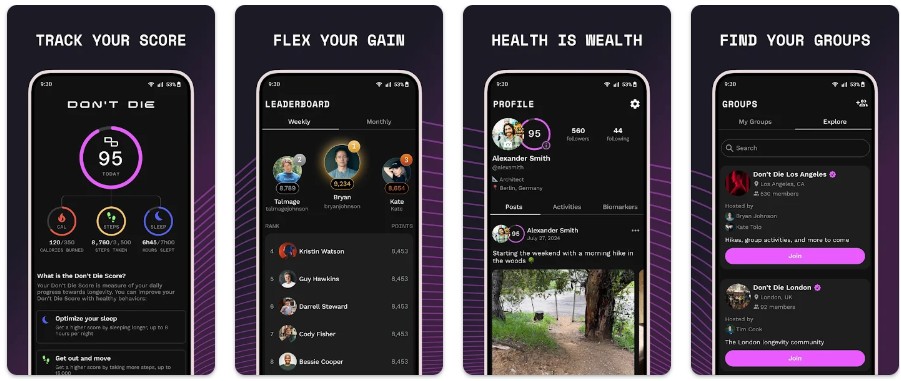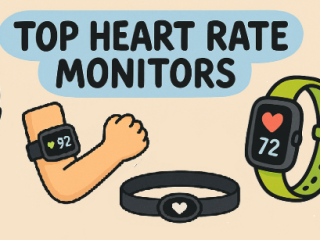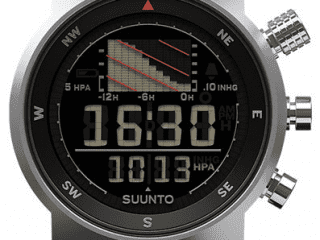Bryan Johnson, the high-profile longevity enthusiast behind the controversial Blueprint protocol, has launched a new digital product: the Don’t Die app, now available on the App Store since October 2024. As with everything Johnson touches, the app is bold, philosophical, and firmly rooted in the belief that death is optional—if only we act in time.
But what exactly does the app do? Can it actually help you improve your health or extend your life? And how does it fit into the broader vision of Johnson’s anti-aging empire?
In this review, we explore the app’s features, assess its usefulness, and offer a critical look at both the promise and limitations of this digital extension of the “Don’t Die” philosophy.
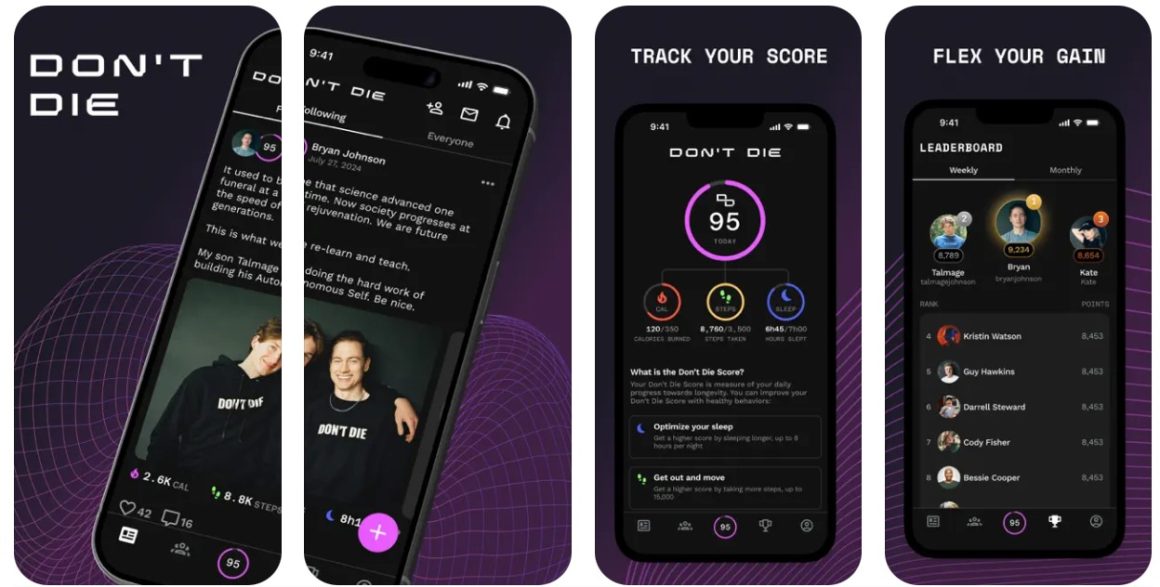
What Is the “Don’t Die” App?
At its core, the Don’t Die app is a personal behavior tracker built to gamify health decisions. It uses an interface of small, daily missions across four key categories:
- Body – movement, nutrition, and rest
- Mind – meditation, gratitude, cognitive reflection
- Society – digital hygiene, relationship focus, social presence
- World – purpose, community contribution, long-term impact
Each day, users check off habits or tasks that align with longevity science and “Don’t Die” principles. For example:
- Did you get 7–9 hours of sleep?
- Did you eat only nourishing, low-inflammation foods?
- Did you avoid unnecessary screen time or digital distractions?
- Did you show appreciation or deepen a relationship?
These entries build into a visual daily “stack” that reinforces behavioral consistency. The more tasks you complete, the more solid your foundation looks—literally. The language is playful but serious: you’re building a “Don’t Die Stack” to outlive entropy itself.
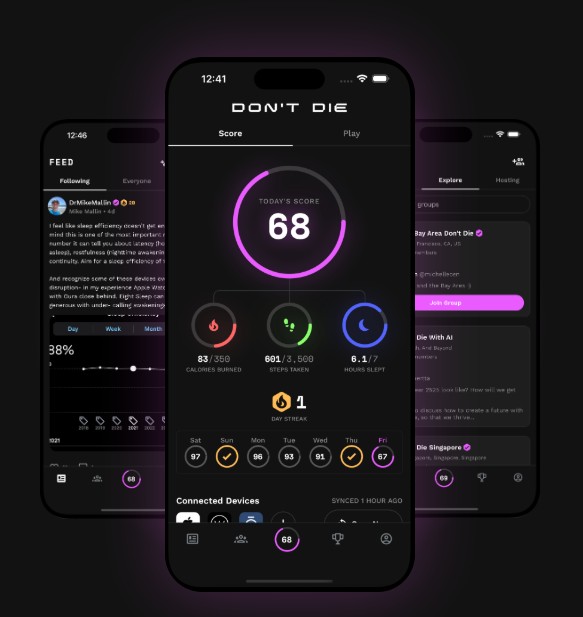
First Impressions: Clean, Accessible, and Philosophical
From a UX perspective, the app is well-designed—clean, minimalist, and intuitive. It combines daily checklists with lightly gamified visuals that track your consistency over time.
The app opens with a striking line: “You are a multi-trillion-cell organism on the edge of irreversible decline.” If you’re familiar with Johnson’s branding, you’ll recognize the tone—dramatic, existential, and forward-looking. For the right user, it’s motivating; for others, maybe a touch intense.
The app is free to use (as of now), making it accessible to anyone curious about Johnson’s ideas without requiring a subscription to Blueprint’s supplements or meals.
The Good: Behavior Framing, Simplicity, and Reflection
The biggest strength of the Don’t Die app is that it encourages intentional living. It reminds you to ask:
- Did I prioritize my physical health today?
- Did I challenge my mind, or allow it to decay into digital sludge?
- Did I act with purpose, or did I default to autopilot?
These prompts are backed by credible behavioral science. Many public health experts agree that small, consistent changes—especially around sleep, movement, and stress management—are more impactful than trendy biohacks. In that sense, Johnson is on the right track.
The daily reflection page (“Did I show up as my future self?”) is an elegant way to build identity-based motivation. This aligns with atomic habit theory: you don’t change behavior by setting goals—you change it by becoming the person who behaves differently.
Too Simple for the Serious, Too Heavy for the Casual
Despite its good intentions, the Don’t Die app raises several concerns:
1. Lack of Personalization
Everyone gets the same checklist. There’s no dynamic feedback, AI, or integration with wearable devices (yet). Whether you’re a novice or a biohacker with a WHOOP and a continuous glucose monitor, the tasks are one-size-fits-all.
That might be fine for some users, but it also limits the app’s usefulness over time. You quickly run out of novelty.
2. Behavior Tracking vs. Health Impact
While tracking daily behaviors is helpful, the app doesn’t track outcomes—there’s no direct link to biometrics, lab results, or actual longevity metrics. So the app assumes that checking a box means you’re healthier, which may not always be true.
A more advanced version might integrate data from Apple Health, Oura, or blood tests to close the loop between behavior and results.
3. Philosophical Weight
The “Don’t Die” brand is inherently weighty—some might say overwhelming. Framing every micro-decision as life-or-death could create pressure, not motivation. There’s a fine line between meaningful urgency and existential guilt.
That said, if you’re already aligned with Johnson’s worldview, this tone may work for you. For others, a lighter or more flexible version could be more sustainable.
How Does It Fit Into Johnson’s Broader Ecosystem?
The Don’t Die app is clearly a behavioral gateway into the larger Blueprint universe. It echoes Johnson’s core message: death is a solvable problem if we build systems that encourage optimal living. As such, the app serves as:
- A daily companion to the more data-heavy Blueprint protocol.
- A self-awareness tool for those new to longevity concepts.
- A potential on-ramp to deeper engagement with Johnson’s brands.
It doesn’t replace medical advice or robust longevity interventions—but it doesn’t claim to. Instead, it offers structure for what Johnson calls “moment-to-moment embodiment” of the Don’t Die philosophy.
Helpful but Needs Depth
If you’re looking for a daily behavioral compass that nudges you toward better living, the Don’t Die app delivers. It’s easy to use, reflective, and aligned with best practices in habit design.
But if you’re seeking a deeply personalized, data-integrated tool for optimizing longevity, this is a first iteration, not the final word. Without measurable outcomes or adaptive feedback, it risks becoming a glorified checklist.
That said, for what it is—a free, well-made app to help reframe your choices—it’s a valuable tool. Think of it as a philosophical mirror more than a scientific dashboard.
Bottom Line: The Don’t Die app can help you live more intentionally and make better daily decisions—but don’t mistake it for a longevity silver bullet. As Johnson himself might say: it’s not the app that saves you. It’s who you become by using it.
